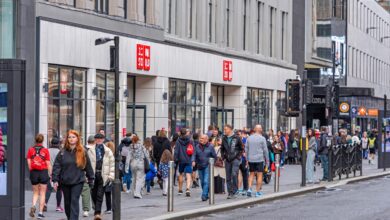Footfall climbed 3.3% in 2023 despite cost-of-living crisis
While there is optimism amongst consumers as falling inflation rates ease the cost of living crisis, shoppers still face personal finance constraints

Register to get 1 free article
Reveal the article below by registering for our email newsletter.
Want unlimited access? View Plans
Already have an account? Sign in
Footfall steadily rose by 3.3% in 2023 compared with the previous year, despite the rising prominence of the cost of living crisis, according to MRI Software’s latest retail outlook report.
The findings suggest that consumers found a way to spread costs, as retail “stood firm” in the face of the cost of living crisis, adverse weather conditions and rail strikes.
MRI Software’s findings also confirmed that hybrid working is “here to stay”, having identified an average of 60% of consumers working at home for at least part of the week in 2023.
Meanwhile, footfall capture rates from street to store dipped in 2023 to 8.5% from 9.1% in 2022. While there is optimism amongst consumers as falling inflation rates ease the cost of living crisis, shoppers still face personal finance constraints.
According to MRI’s report, some 84% of consumers have chosen to shop for cheaper brands when it comes to essentials.
Overall, MRI found 2023 to be a disruptive year for high streets, as rail strikes and adverse weather lead to 26 week-on-week declines in high street footfall.
That said, high streets were boosted by key trading weeks throughout the year, having shown strong week-on-week performances over Easter and Black Friday as both occasions grew by 17% and 10% respectively.
Jenni Matthews, marketing and insights director at MRI Software, said: “As we look ahead to 2024, consumer behaviour continues to evolve shaped by many factors including hybrid working and inflation, which makes it a challenging time for the retail sector as they grapple with these adjustments.
“Despite signs of improvement, the UK economy remains in a delicate position. While inflation has slowed, prices are still higher than what consumers would prefer. This will continue to impact spending power however, should this remain stable, we anticipate recovery as the year progresses.”
She added: “International conflicts add another layer of complexity, likely to disrupt stock availability due to delays in products arriving from overseas.”







